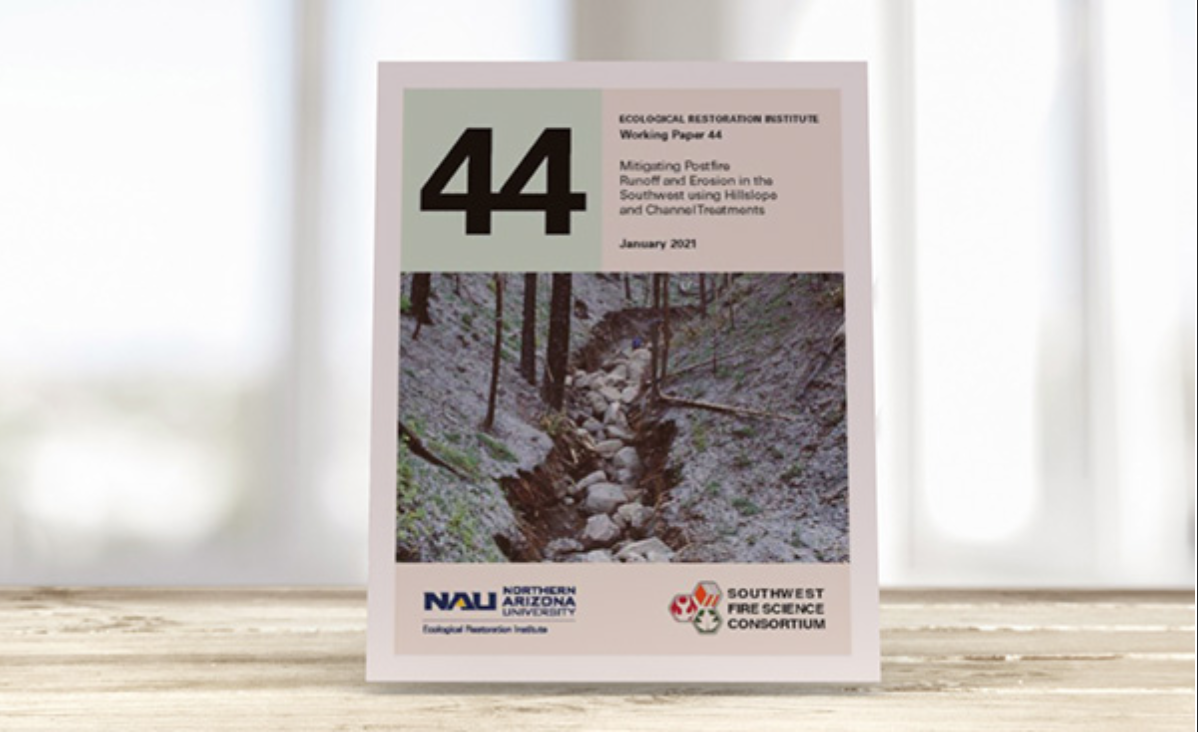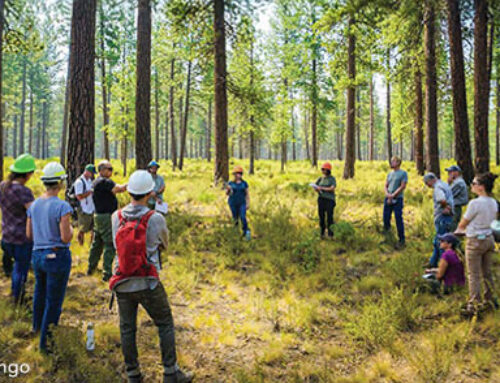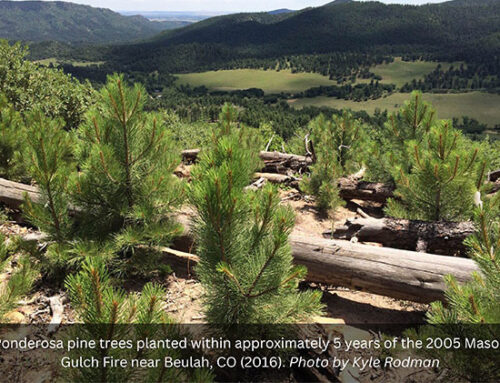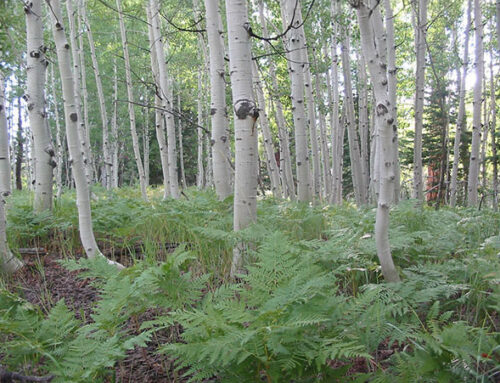Catastrophic wildfire events impact communities, ecosystems, and cultural resources—and can pose ongoing hazards years after the fire is extinguished. Flash flooding and erosion from heavy rainstorms are postfire emergencies caused by the severe loss of vegetation cover and alteration of soil conditions.
Because these impacts pose health and safety concerns and threaten property and infrastructure, emergency response teams mobilize to assess postfire conditions and evaluate and implement the appropriate erosion mitigation treatments. Selecting the right treatment is a complex decision, but understanding the treatment costs, implementation methods, and ecological impacts can help inform the process.
A new working paper by the Ecological Restoration Institute and Southwest Fire Science Consortium compares the effectiveness of treatments designed to mitigate the two most common forms of postfire erosion: hillslope and channelerosion. The paper focuses on severely burned ponderosa pine and mixed-conifer forest soils of the Southwest. It includes examples of lessons learned and trade-offs among erosion treatment methods and provides management recommendations and treatment implications.
Don’t have time to read the full working paper? Check out the fact sheet! It provides a five-minute takeaway of the paper’s key findings.




